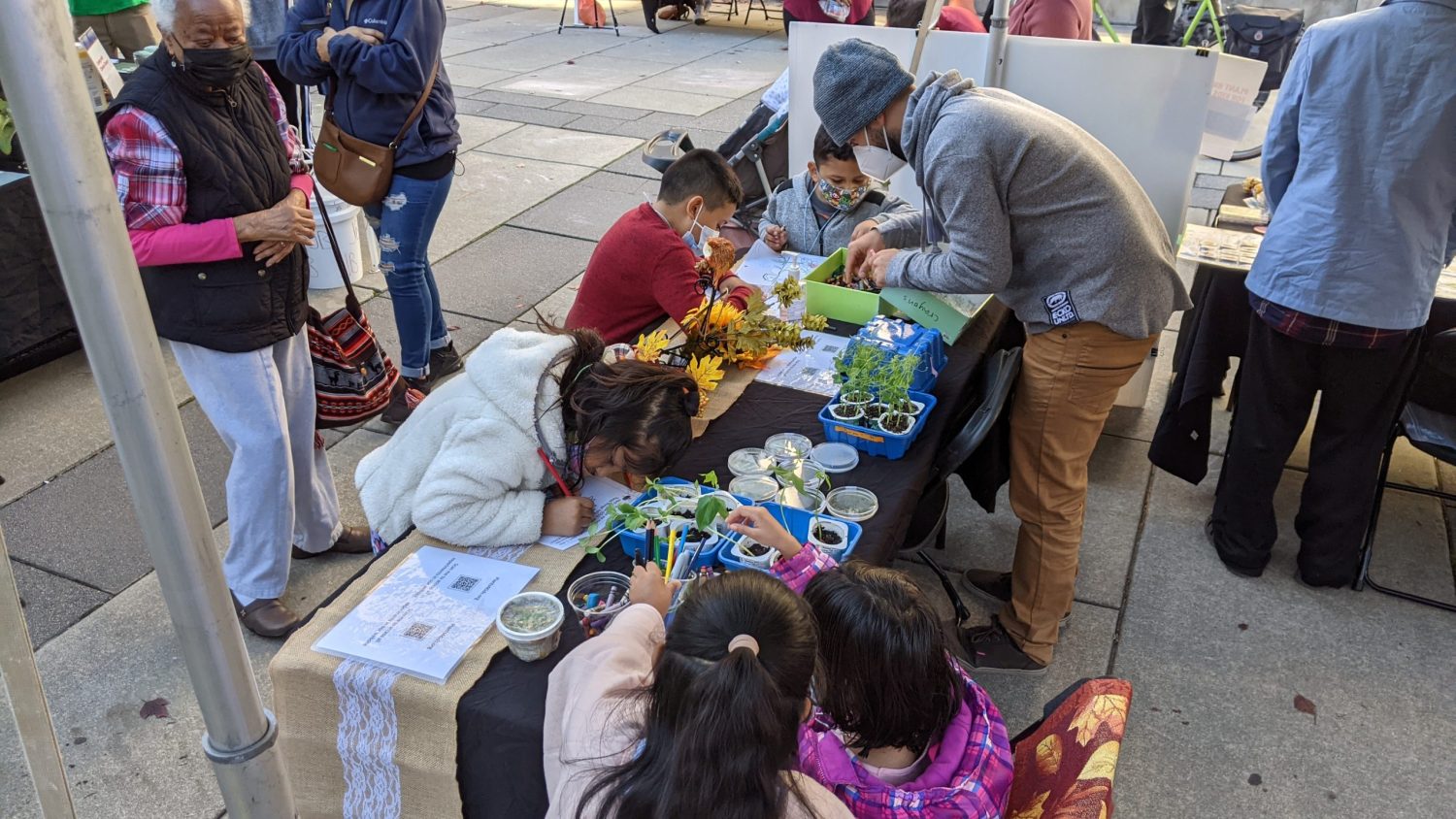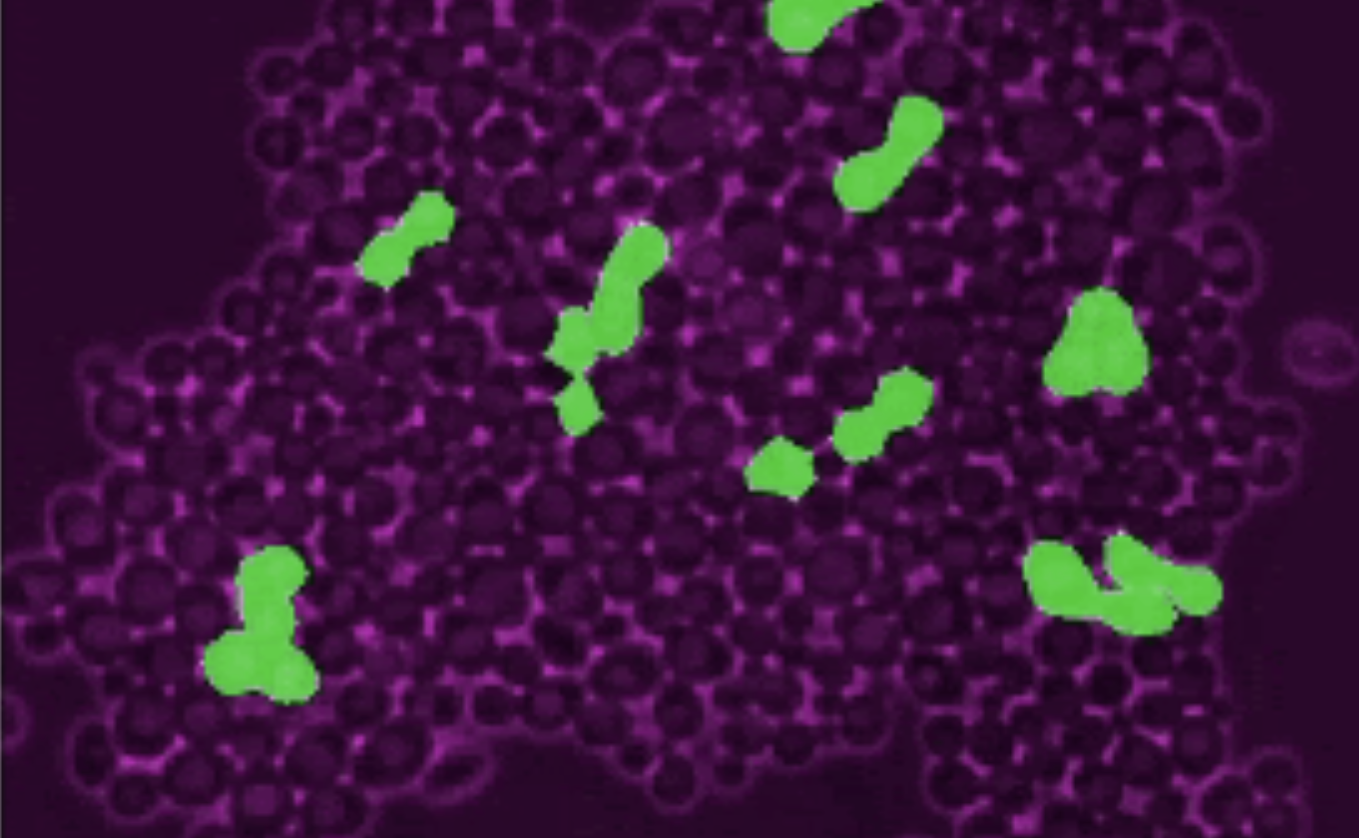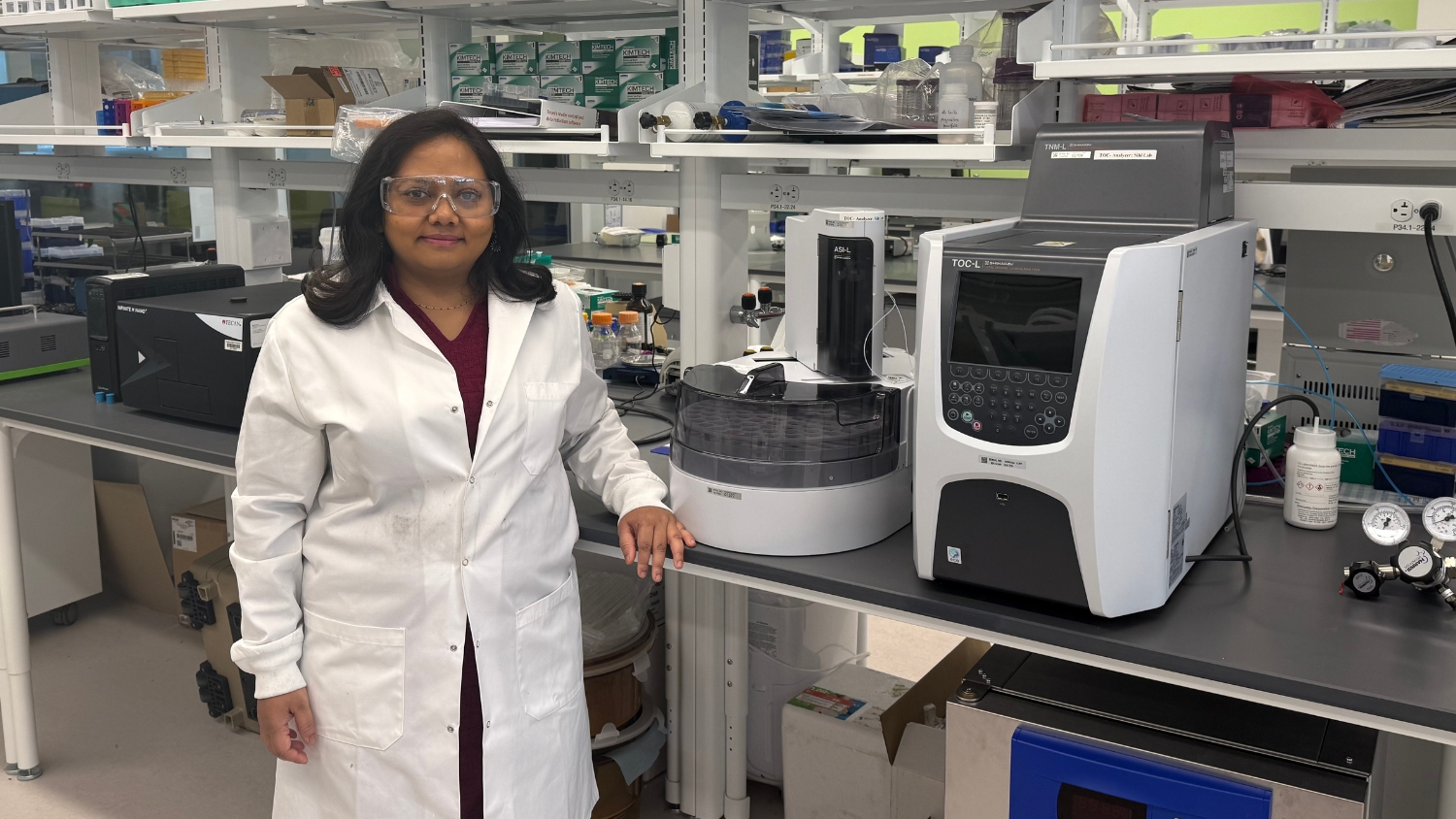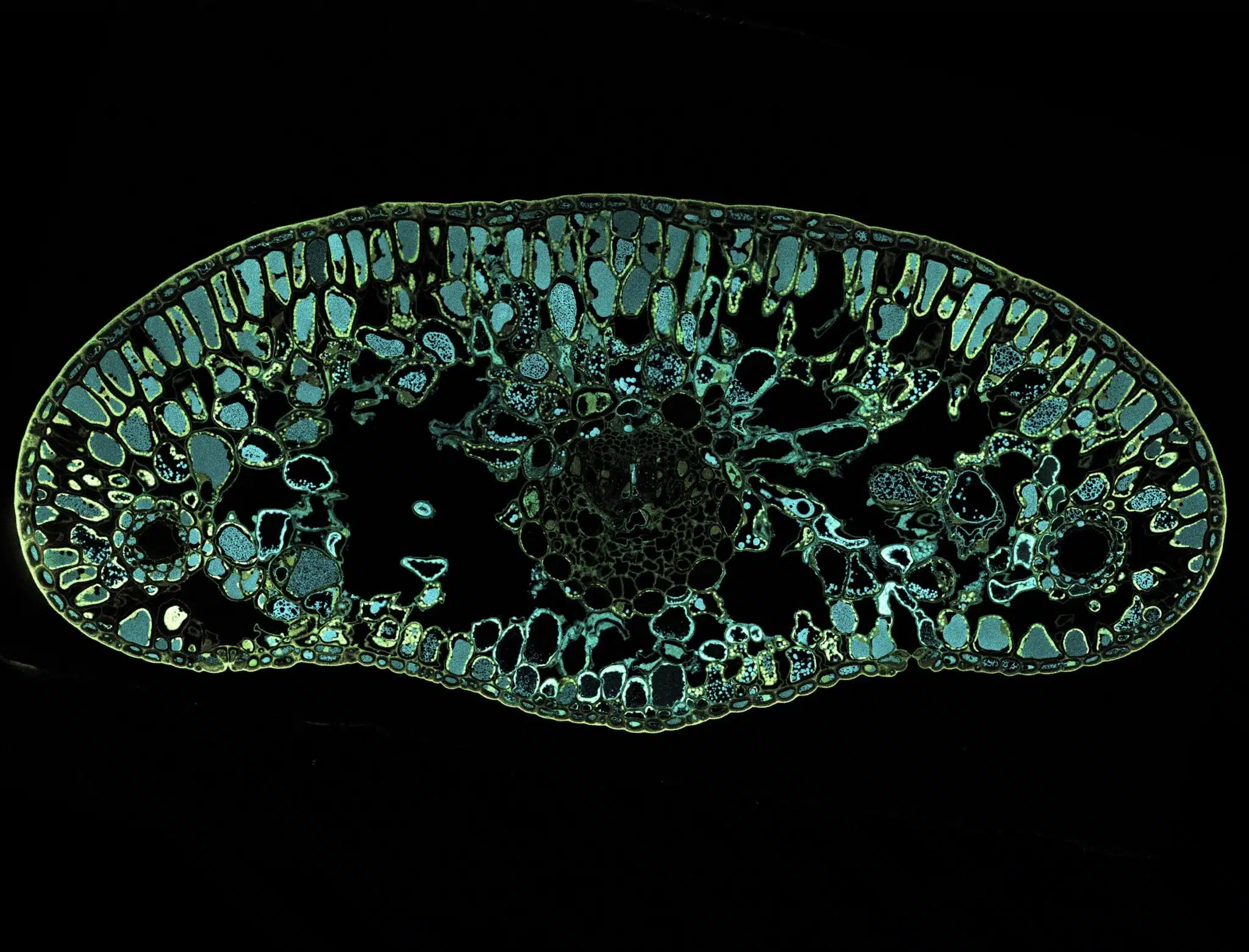In early November, the NC Museum of Natural Sciences hosted a “Darwin Day” event to celebrate Charles Darwin’s contributions to modern science and to promote excitement in people of all ages for science in general. The museum offered crafts and games, hands-on science stations, and presentations from scientists.
Among the scientists who presented at the event were members of several labs from the Department of Plant and Microbial Biology (PMB). The Alonso-Stepanova Lab is heavily involved in outreach (most notably Plants4Kids) and set up several activities for this event. They had seed and plant guessing games, where visitors could guess which seeds came from which plants or what part of a plant different fruits and vegetables come from, and a coloring activity for younger visitors. They also brought Petri dishes and plants from experiments currently underway in their lab and had some preset experiments to show visitors. They even gave out mini “greenhouse” necklaces containing seedlings.
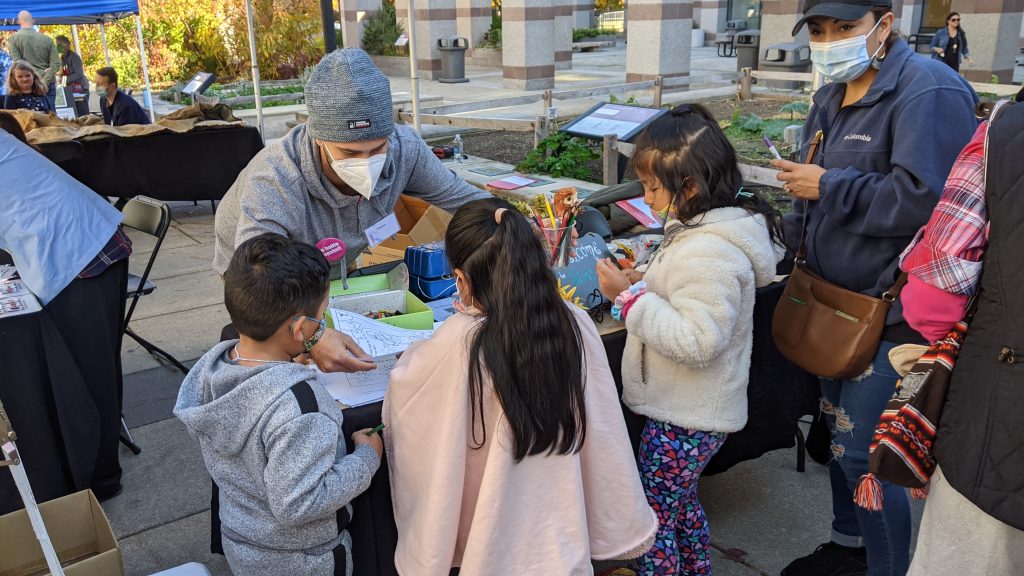
The Sheth Lab and the Petry Lab also collaborated on an exhibit called “Coping with Climate Change,” which featured a display of plants with various adaptations to different environmental conditions and a discussion of how plants adjust to rapidly changing conditions. They also set up a game where participants became plants in a changing climate, and they had to decide whether to adapt or move.
We asked Anna Stepanova (PMB faculty member) and Kaleb Goff (PMB graduate student in the Sheth Lab) about this Darwin Day event, as well as science outreach in general.
What was your favorite part of Darwin Day at the NC Museum of Natural Sciences?
Kaleb Goff: Adjoining the exhibit table was a hopscotch game in which participants would take on the role of being a plant facing rapid climate change and could follow one of two paths: adapt or move. In the adapt path, participants watch as a population containing some cold-adapted individuals and some warm-adapted individuals becomes a population with only warm-adapted individuals. In the move path, participants hop, spin, jump and crawl to track increasingly warm conditions. After our game, we ask participants what they learned or noticed, and are always delighted by the discussion and follow-up questions we are asked.
How did you get involved with this specific event?
Goff: This year, our labs were excited for the opportunity for face-to-face, outdoor outreach after missing this important part of our work this past year. Our activity was developed when the NC Museum of Natural Sciences contacted us in 2019 about participating in Darwin Day. Aeran Coughlin (former lab manager) led the charge in developing the activity, with input from Rachel Wooliver, Emma Vtipilthorpe (PMB graduate student and Seema Sheth (PMB faculty). Former undergrad Mia Wiegmann also participated.
Does your lab do any other outreach activities throughout the year? If so, can you tell us about them?
Goff: Our lab participates in outreach activities on an opportunistic basis; from formal events such as Darwin Days to informal talks around town and at the dinner table. One specific example is our lab’s involvement with the GLORIA (Global Observation Research Initiative in Alpine Environments) Project, which aims to record plant community changes on mountain summits all over the world. Plants that grow above the tree-line are predicted to be some of the most vulnerable organisms to climate change on Earth. They have limited ability to get to a more favorable mountaintop and have nowhere else to move upward to! The field component of this project happens each year in late summer when alpine plants are blooming. The field work relies on volunteer scientists from all walks of life and is an amazing opportunity for outreach! We have plans to host undergraduates for summer research and create high school programs for underrepresented groups in southern California to participate in field research.
Anna Stepanova: We used to do various school classroom demos (pre-COVID), including working with elementary school kids and plants or with high school students on recombinant DNA. We host high school students in our lab over the summer and give occasional lab tours to visitors (middle and high school students). Jose Alonso runs a monthly DIY group for graduate students. I am planning a teacher training workshop on synthetic biology this coming summer (postponed twice due to COVID). I used to judge science posters at my kids’ elementary school. Prior to COVID, we ran a monthly, 2-hour Plants4Kids demo at the NC Museum of Natural Sciences and did three full-day events per year (Darwin Day, Triangle Sci-Tech Expo, Groundhog Day).
*Read more about the history of Plants4Kids here
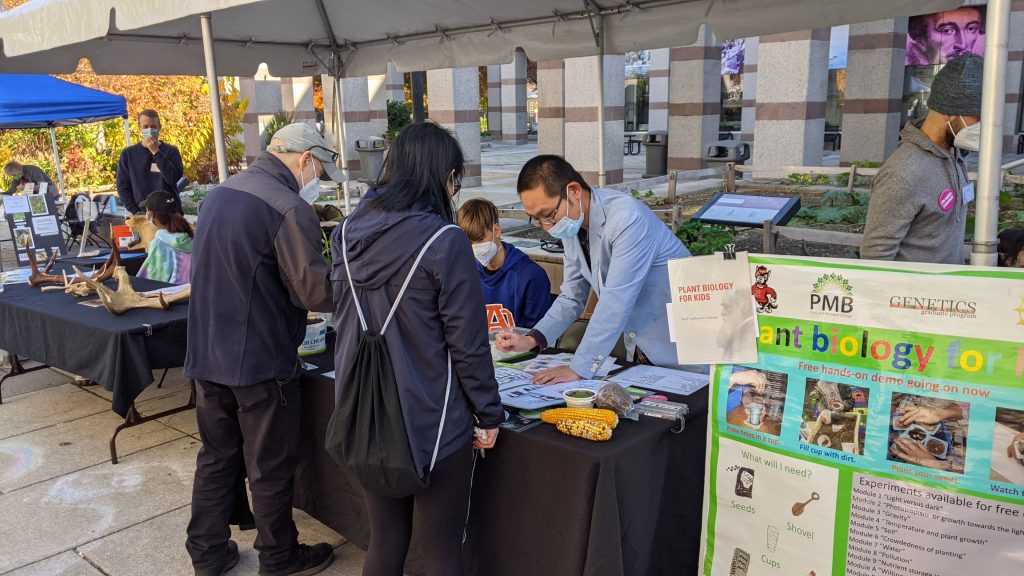
What do you hope participants gain from Plants4Kids?
Stepanova: That kids realize that plants are interesting to work with and study, that the answers to simple questions can be found not only in books and videos, but also by doing experiments (what plants need to grow, why plants in the light are green and bushy but those in the dark are white and spindly, etc.).
Who is involved in Plants4Kids?
Stepanova: All Alonso-Stepanova lab members and our colleagues from across the PMB department.
Do you have any plans for expanding your outreach programs or developing new ones?
Stepanova: Yes, once we return to the Museum on a more regular basis (when COVID concerns are resolved), we plan to bring some of the new DIY projects to showcase. My biggest ongoing initiative is the workshop for teachers I mentioned above.
Why do you think outreach is important, especially to younger audiences?
Goff: There are many reasons why outreach is important, particularly to younger audiences. One that I have been reflecting on recently and was reminded of during Darwin Day 2021, relates to what we, as researchers, can gain from outreach. Whether we are aware of it or not, we have an incredible ability to share wonder, awe and inspiration as biologists. This may not always be apparent during long hours working on repetitive tasks or during arcane arguments over topical minutiae. But if we take a step or two back, it is truly wondrous that it is our job to understand how plants eat light and create carbohydrates, why there are so many different species in some of the most extreme environments on Earth, and how plants provide for human life in nearly every possible way. For me, it is often outreach, especially with younger audiences, that brings that wonder back into sharp focus. Not only does this increase my creativity and excitement for getting up in the morning and going to work, it has the potential to inspire the next generation of investigators.
Stepanova: Outreach is important because it makes science more accessible and less intimidating, it promotes kids’ natural curiosity, and gets them excited about plants and the natural world in general.
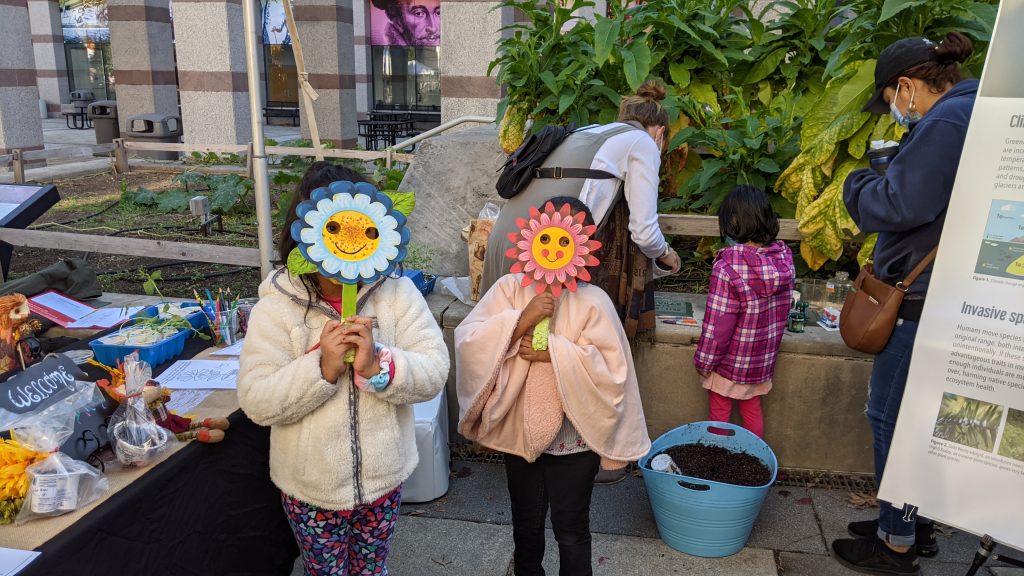
What is your favorite plant and why?
Goff: A favorite plant of mine is the Rambling Fleabane (Eriogonum vagus), a cheerful white-flowered daisy that grows at some of the highest elevations in North America. This plant reminds me of happy days rambling with puffy white clouds over rocks and ridges, and to keep in the high country of the mind; or in other words to take the inspiration that the mountains teach us down from the mountains and back to my desk!
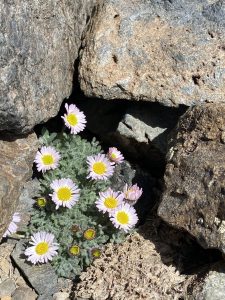
Stepanova: Arabidopsis for work, and tomatoes for leisure! Arabidopsis is the best model plant for studying basic biological processes because it’s easy and inexpensive to grow and manipulate genetically, and lots of genetic resources are available for this species (e.g. mutant and transgenic lines, molecular methods, etc.). Arabidopsis makes lots of seeds (up to 10,000 per plant), which is a goldmine for geneticists; with so many progeny, we can identify rare combinations of genetic traits of interest. And tomatoes are a lot of fun to grow, eat and share! I grow several dozen different tomato varieties in my home garden every summer (~200 plants at a time).
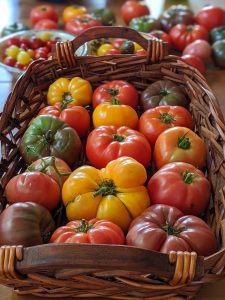
- Categories:
